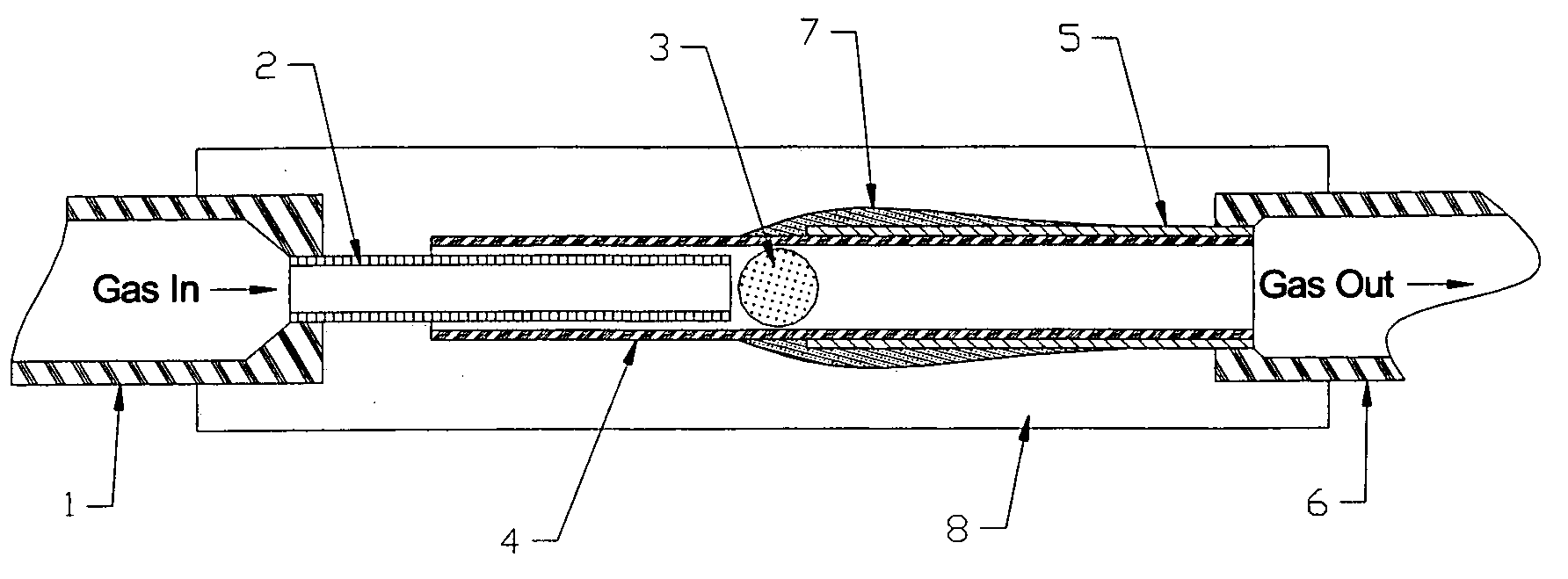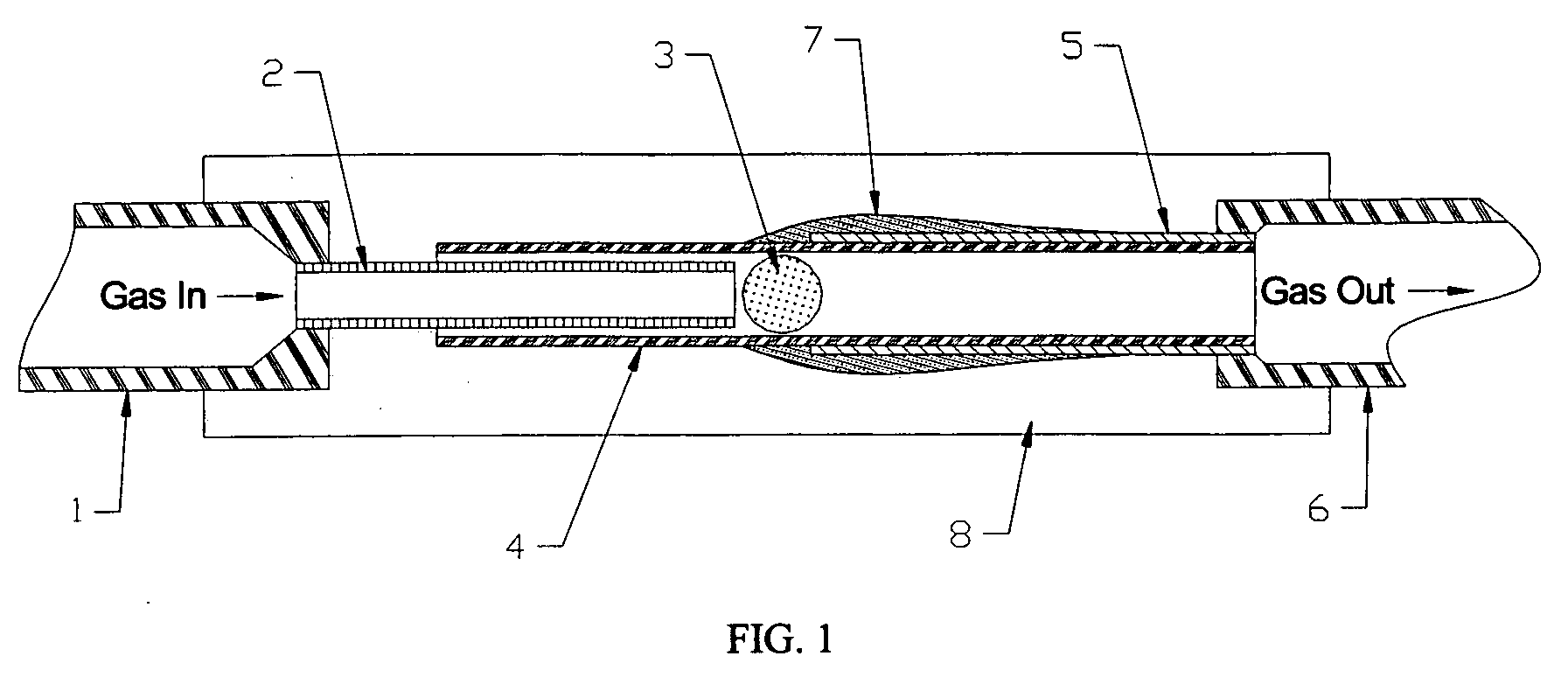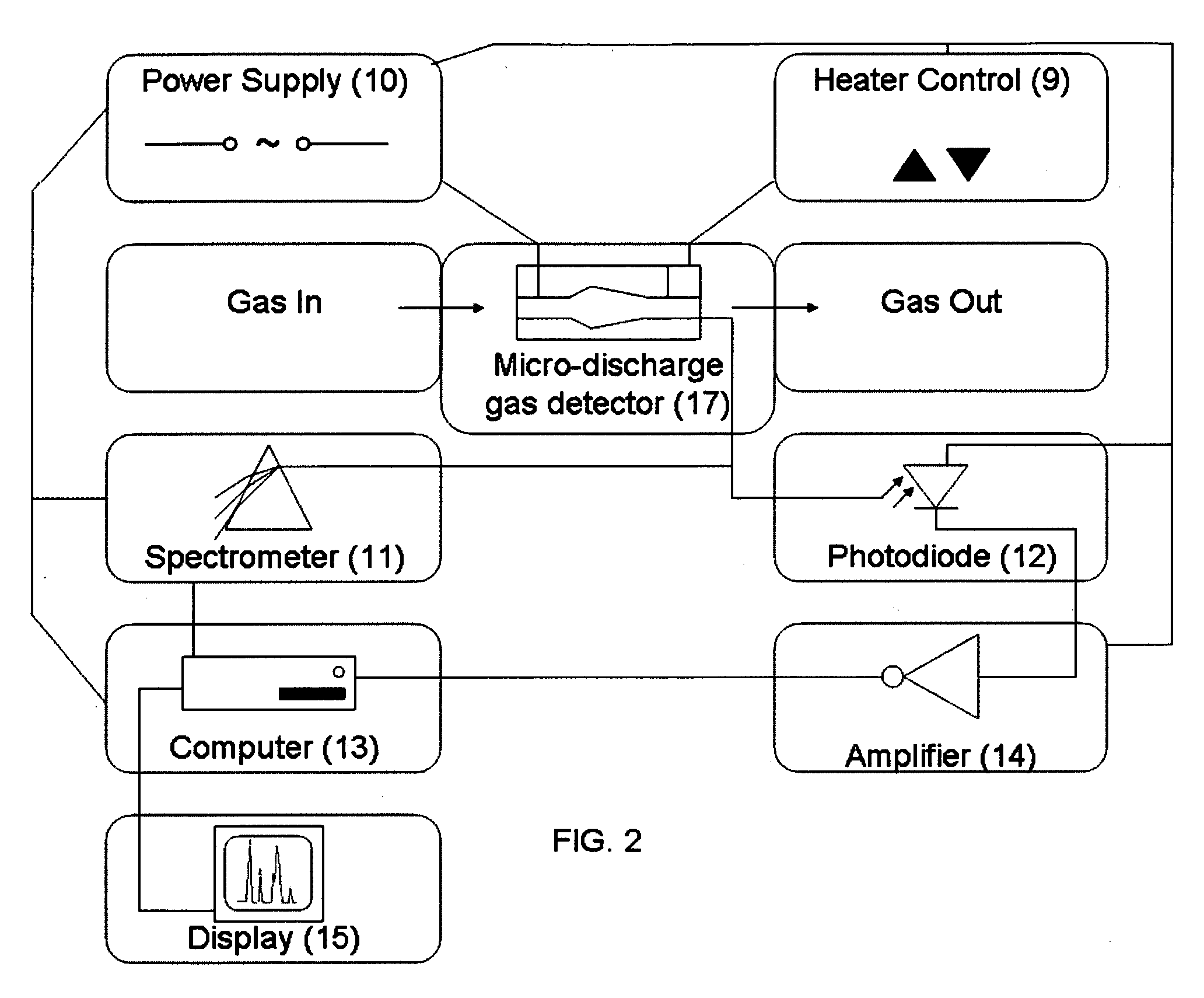Capacitively coupled dielectric barrier discharge detector
a dielectric barrier and capacitively coupled technology, applied in the field of gas detectors, can solve the problems of large cost, difficult use, and inability to achieve the effect of reducing power and less power
- Summary
- Abstract
- Description
- Claims
- Application Information
AI Technical Summary
Benefits of technology
Problems solved by technology
Method used
Image
Examples
Embodiment Construction
[0017]The gas detector of this invention is a capacitively coupled dielectric barrier discharge device, also called a micro-discharge gas detector (17, as shown in FIG. 2). In FIG. 1, the gas detector has an inner electrode 2 and an outer electrode 5, each made of hollow electrically conductive capillary tubing. The inner electrode 2 and outer electrode 5 are oriented coaxially. The inner electrode 2 and outer electrode 5 are separated longitudinally by a small gap as well as axially by a dielectric tube 4. An electric potential applied between the inner electrode 2 and outer electrode 5 creates an electrical discharge within a gas (also called a mixed gas composition, 20, as shown in FIG. 3)in the dielectric tube 4, at the gap (also called the discharge region 3) between the inner electrode 2 and the outer electrode 5. The discharge is characterized by the creation of a plasma. A plasma is electrically conductive due to the relatively high percentage of ions and electrons (electric...
PUM
| Property | Measurement | Unit |
|---|---|---|
| AC voltage | aaaaa | aaaaa |
| inner diameter | aaaaa | aaaaa |
| outer diameter | aaaaa | aaaaa |
Abstract
Description
Claims
Application Information
 Login to View More
Login to View More - R&D
- Intellectual Property
- Life Sciences
- Materials
- Tech Scout
- Unparalleled Data Quality
- Higher Quality Content
- 60% Fewer Hallucinations
Browse by: Latest US Patents, China's latest patents, Technical Efficacy Thesaurus, Application Domain, Technology Topic, Popular Technical Reports.
© 2025 PatSnap. All rights reserved.Legal|Privacy policy|Modern Slavery Act Transparency Statement|Sitemap|About US| Contact US: help@patsnap.com



